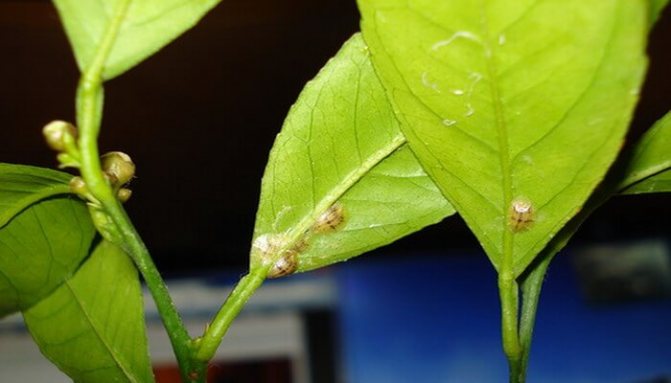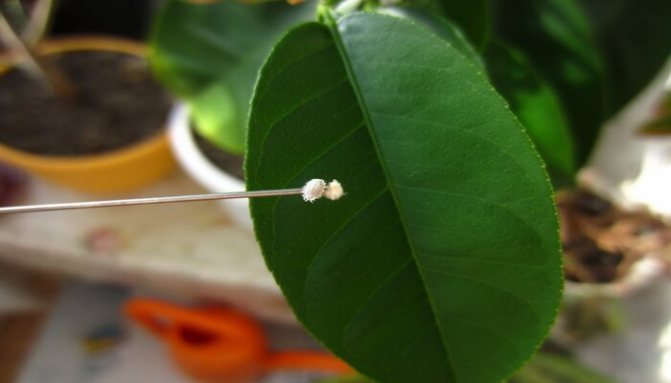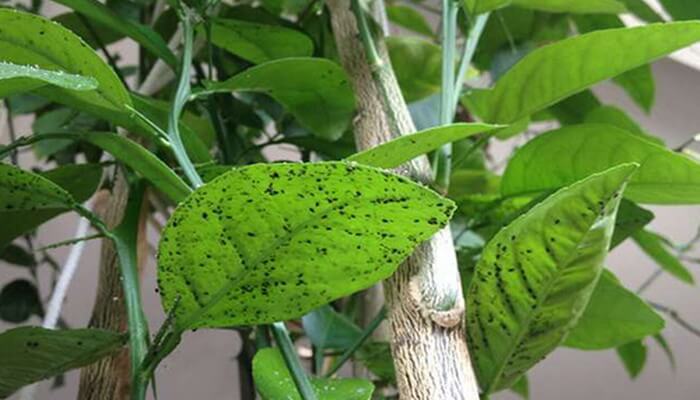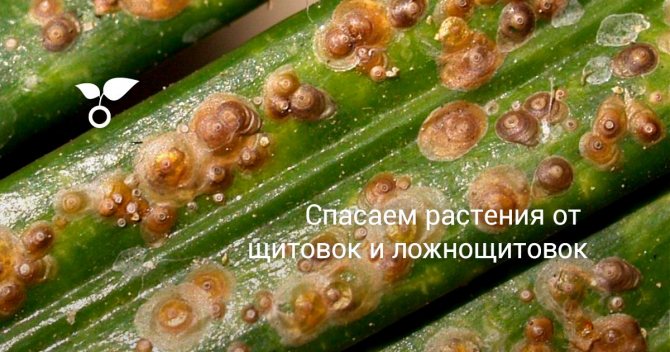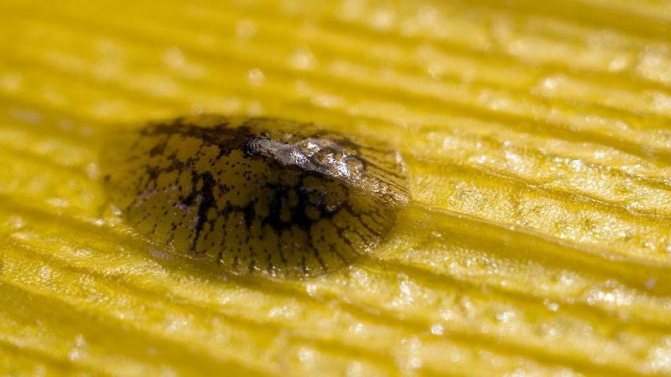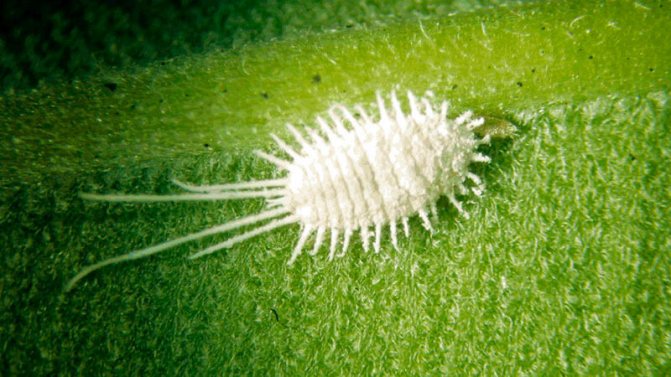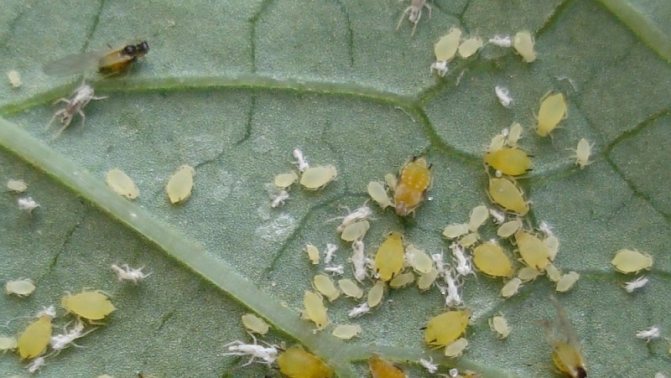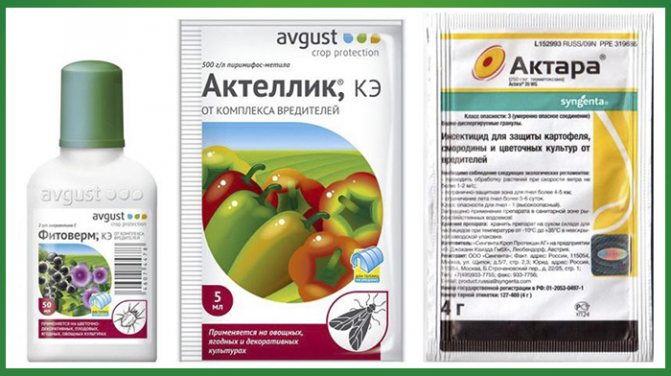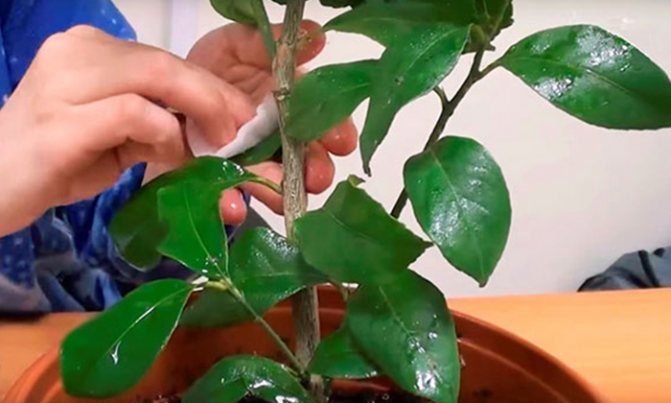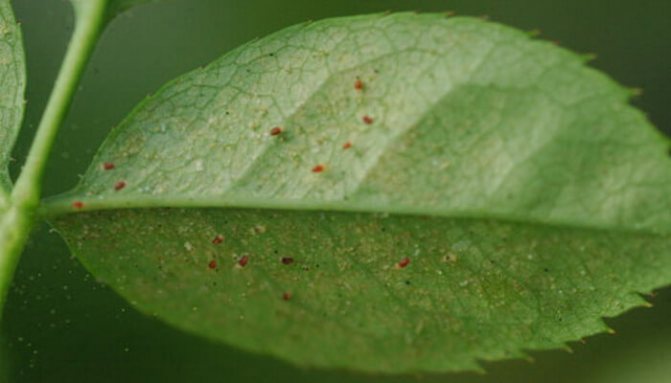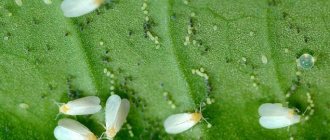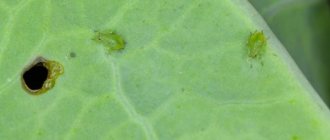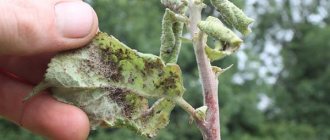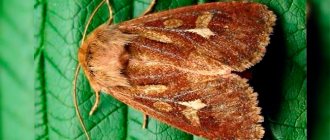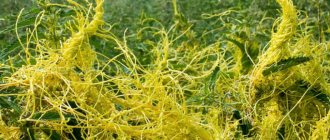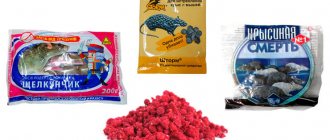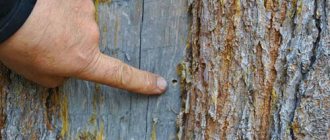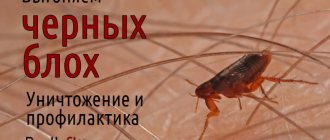Lemon tree diseases
Homemade lemon can fall prey to any insect, but most often it is attacked by such pests:
- scale insects are sedentary pests that stick to the leaves of the plant with the help of the wax produced. Over time, the entire surface of the lemon will become sticky, after which the leaves turn yellow and actively fall out;
- spider mites - the beginning of plant infection can be determined when brownish spots appear on the leaves. Over time, the leaves become covered with a cobweb, along which small red dots move - this is the spider mite;
- aphids - insects of a yellow-green color are not very clearly visible on the surface of the trunk, therefore it is rather difficult to notice them at an early stage of appearance. Very quickly, their number is increasing, occupying not only the trunk, but also the leaves on the lemon.
For each individual case, certain preparations should be used, since some insects are immune to chemically active components. Ideally, it is necessary to carry out the prevention of the appearance of insects and regularly monitor the hygiene of the plant.
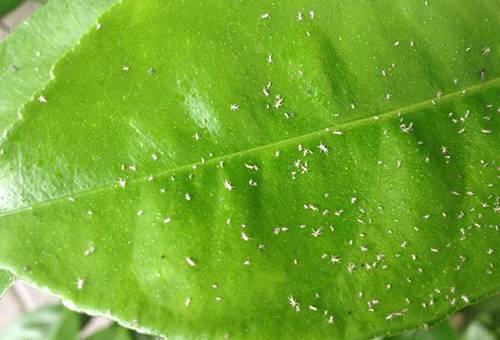
Preventive measures
So that the lemon does not suffer from pests, it is worth following simple preventive measures:
- timely cut off spoiled branches and weak shoots. attracting pests;
- send recently purchased plants to quarantine;
- monitor the cleanliness of the soil in the pot;
- regularly ventilate the room, monitor the sufficient level of humidity;
- every week, wipe the leaves of the plant on both sides with a damp cloth, this will get rid of dust and pests.
The fight against the scabbard should be comprehensive, this is the only way to completely get rid of insects on homemade lemon. Compliance with preventive rules will prevent the plant from becoming infected with dangerous pests.
How to spot aphids on a lemon?
Lemon aphids, actively bred, are clearly visible on the young shoots of the tree, numerous insects are located over the entire surface of the stem. Adult insects can be from 1 to 3 mm in size and have a yellow-green color, and the larvae are practically transparent and much smaller in size.
Aphids enter the apartment through open windows and doors, and can also switch to lemon from a flower bouquet, so you should not put flowers and other indoor plants near the lemon tree.
If a tree grows under the window or there is a flower garden (which is often typical for lower floors), then you should not put a lemon near the windowsill. Pests quickly move into an apartment through an open window, and some small insects are able to penetrate through minimal cracks and holes.


Mandarin
This dwarf tree is popular for its beautiful crown and small, very fragrant fruits. But in many varieties of tangerine, the fruits are not eaten, because they are very sour, therefore, they have only a decorative function. But breeders have bred varieties with edible sweet varieties.
Mandarin trees also exist in the form of the very popular bonsai. Such trees are also capable of flowering and bearing fruit.
Mandarins, like oranges, love warmth and moisture, and they also need regular feeding.


Popular varieties - Clementine, Sochi No. 23, Vasya.
How to deal with lemon aphids?
Citrus trees are more susceptible to pests than others, because their attractive sweet aroma like a magnet attracts all insects. Since the attacks of uninvited guests cannot be avoided, the easiest way is to prevent their occurrence.
- Firstly, regularly (3-4 times a month) you should arrange refreshing procedures for the tree and wash its leaves and branches on both sides under a warm shower. When bathing, the soil should be insulated by covering it with a plastic bag.
- Secondly, when acquiring new indoor plants, at first they should be isolated from the lemon, since the pests present there can very quickly attack the citrus tree.
- Thirdly, it is advisable to arrange a scheduled inspection of the lemon on a daily basis, since, having noticed the appearance of insects at an early stage, it will be much easier to get rid of them.
If aphids have already attacked your tree, you can get rid of pests in the following ways:
- with a slight spread of pests, a solution of green or ordinary laundry soap will help, with which all the leaves and stem of the tree should be washed. After 4-5 days, the procedure should be repeated, usually two times is enough to get rid of aphids for a long time;
- when fighting aphids, tincture of herbal preparations will help. You can use a decoction of nettle or wormwood - 2 tablespoons of dry collection are insisted in a glass of boiling water for 12 hours, after which they are filtered and the damaged leaves are treated with the resulting solution. The elixir of propolis has a destructive effect against aphids, the easiest way is to take a pharmacy solution and dilute it with boiled water in a ratio of 5:20 (tablespoons are taken into account, this amount is enough to process a small tree);
- a solution of tobacco dust infused with boiling water with the addition of shavings of laundry soap helps to eliminate existing pests and prevent the emergence of new ones. With this composition, the plant is sprayed every other day for a week, after which, after 5-7 days, the procedure is repeated;
- garlic water is also effective against the spread of aphids. The head of garlic should be rubbed through a meat grinder or grater, the gruel should be placed in a glass of hot water and insisted in a dark place for 48 hours. Spray according to the previous scheme;
- The easiest and most effective way to get rid of aphids on a lemon tree is to subject the plant to dichlorvos treatment. To do this, the tree is placed in a plastic hermetically sealed bag, where a cotton wool moistened with dichlorvos is previously placed. The plant is left in this position for 4-5 hours, after which the leaves should be washed with clean warm water. If necessary, the procedure can be repeated after a week.
If homemade recipes do not help with pest control, it is worth resorting to insecticides, which are sold at hardware stores, or call in gardening specialists for help.
The tropical plant lemon has long been grown in room culture. But this is a rather complicated matter, since the plant needs to be provided with conditions as close as possible to the conditions of its homeland. We will help you avoid possible diseases and pests, introduce you to the methods and methods of dealing with them.
Measures to prevent lemon disease and pest damage
The main measure for the prevention of lemon diseases is to create familiar conditions for its growth and life. Before you start planting indoor lemon, you need to familiarize yourself with the rules for growing it and be ready to follow them carefully. This capricious plant does not forgive even seemingly insignificant deviations from the rules and reacts to them with a deterioration in health. So, let's list the main important rules:
- Compliance with the optimal thermal and humidity conditions. The plant feels better in the temperature range of + 15-22 ° C, but if you give it a rest for the winter, then the temperature should be reduced to + 10-12 ° C. And also lemon does not tolerate sudden temperature fluctuations. The plant reacts negatively to dry air - its humidity must be maintained at a level of 75-85%. To control this parameter, it is better to get a hygrometer. Based on these conditions, a number of rules must be followed:
- Do not place the plant near heating appliances.
- The movement of a lemon from room to room, from room to street and vice versa should occur at moments when the temperatures are approximately the same. The increase / decrease in the temperature of the content should be as smooth as possible.
- To increase the humidity level, use air humidifiers or place wide vessels with water in the room.


To increase the humidity level, you can use special air humidifiers.


To fill the pot, it is better to use ready-made soil mixtures for lemons.


For watering lemon, it is better to use bottled, melt or rainwater.


For lemon, it is better to use complex fertilizers.
Video: how to feed lemon
Diseases of lemons in indoor conditions
Indoor lemon has a fairly large list of possible diseases. Let's consider the most common ones.
Chlorosis
This disease occurs as a result of stagnation of moisture, acidity of the soil, deficiency of iron and other elements. In this case, there is a decrease in the activity of photosynthesis and the formation of chlorophyll. The first sign is yellowing of the leaves, and then they fall off. Then the tops of the shoots can dry out, the roots die off, the leaves can be crushed.
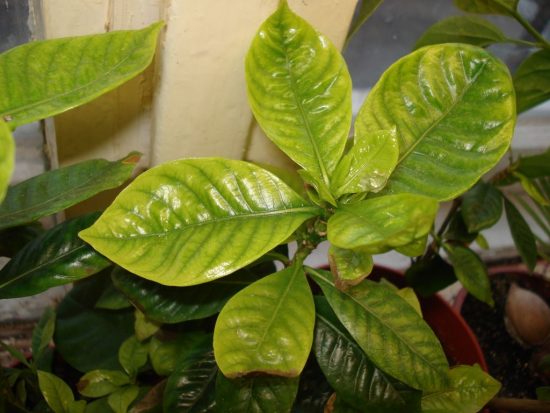

With chlorosis, the soft tissues of the leaves turn yellow, and the veins remain green.
It is clear that the disease is caused by a violation of care, therefore, first of all, they need to be eliminated:
- Get rid of stagnant moisture, dry the soil, replace it if necessary. Rinse and dry the drain. You may need to transplant to a different, smaller pot.
- Check the acidity of the soil with litmus paper. If it is high, then the soil should be deoxidized by adding fluff lime or chalk. To do this, take half a tablespoon of the powder and dilute it in a glass of warm water, and then water the soil in a pot. The acidity of the water flowing from the drainage holes is measured, and if it is still high, the procedure is repeated until the pH level is in the range of 6-6.5 units.
- Replenish iron deficiency by introducing preparations containing it in a chelated form, such as Ferrofit, Ferrylene, Antichlorosis, Micro-Fe and the like. Or you can simply dissolve 20-40 grams of ferrous sulfate in one liter of water and feed the plant.
Phylostictosis
This fungal disease is also called brown spot. A symptom of the disease is the formation of brown or dark brown spots on the leaves of a round, oval or irregular shape. If you do not start treatment, then the spots, growing, cover the entire surface of the leaf plate, after which the leaves dry up and fall off. Favorable conditions for the development of the fungus are dampness and air temperature +25 ° C and above. The source of infection is soil, water, purchased flowers, etc.


When phyllostictosis is affected, brown spots are formed on plant leaves
To cure the plant, you should cut off the affected leaves and treat the crown with fungicides (these are drugs to fight fungal diseases). Popular drugs are Horus, Quadris, Abika-Peak and others.It is better to use them outdoors, but if you still have to use them indoors, then take precautions - prevent drugs from getting on food or dishes, ventilate the room after processing. If the infection is not strong, then it is better to use biological products such as Fitosporin-M, which is absolutely safe for humans, animals and bees. At the same time, it is also a fertilizer, since it contains humic acids.
Anthracnose
It is also a fungal disease that often infects lemons in greenhouses and greenhouses. If the room has high humidity and temperature, then indoor lemon can also be affected by the disease. Anthracnose can be recognized by the formation of dark brown spots on the leaves, covering the edges. With a strong defeat, the fungus spreads to the shoots and fruits, all the leaves dry out, the aerial part of the plant dies.
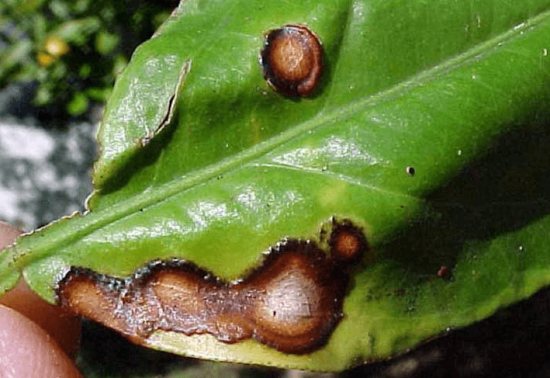

Anthracnose can be recognized by the formation of dark brown spots on the leaves, covering the edges.
Prevention and treatment are the same as for other fungal diseases.
Citrus Cancer
If the leaves of the lemon have dark brown spots with a yellow border, similar to small tumors, this means that the plant is infected with the citrus cancer virus. He is not able to harm a healthy plant, but if it is weakened from other diseases or poor-quality care, then cancer will begin to develop. At the same time, he, starting on the leaves, will subsequently move on to fruits and shoots. They have not yet learned to fight the disease, so the plant will certainly die. Without expecting this, it is destroyed as quickly as possible so as not to infect healthy lemons and other citrus fruits, if any. Prevention - careful observance of the rules for caring for lemon, as well as regular processing of the crown with a weak solution of potassium permanganate with an interval of 3 months.
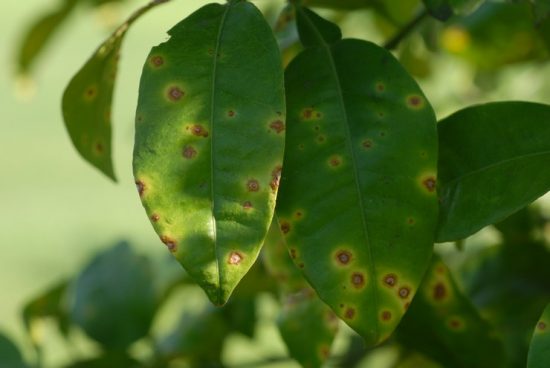

If the lemon leaves dark brown spots with a yellow border, the plant is infected with citrus cancer virus
Video: lemon disease
Pests on lemon
Of course, in indoor conditions it is more difficult for insects to get close to the plant, but the paths are still found.
Shield
It is a hemiptera with a small (0.5-5 mm) body covered with a dense shield, consisting of one or two larval skins and a secretory wax part. Because of this, the scale insects on the plant are sometimes perceived as wax droplets. Young insects move actively, spreading throughout the lemon. In adulthood, scale insects lose their ability to move and stick to the plant. Feeding on its juice, they themselves secrete a sweet liquid, which accumulates on the leaves and shoots, making them sticky. It clogs pores, interfering with respiration and photosynthesis. And also this liquid is a breeding ground for sooty fungus. If you do not fight the pest, then the result will be disastrous - the leaves will curl up, dry out and fall off, the plant will weaken and die.


The scabbard on the leaves resembles droplets of wax
Insecticides are used to destroy pests. The contact preparation Fitoverm can be used against young larvae, but the shell reliably protects adult insects from its damaging effect. Therefore, systemic drugs that penetrate the vascular system of the plant will be more effective. Pests, feeding on the poisoned juice, die. The best of this group for lemon are Aktara and Aktellik. They can not only spray the crown, but also water the soil to enhance the effect. But it should be remembered that Actellic has a strong unpleasant odor, so it can only be used outdoors. In addition, you can use various folk remedies - onion and garlic infusions (they are prepared by keeping the chopped vegetable in water for about half a day at the rate of 50 grams per half liter), a soap-kerosene solution (for one liter of water, 40 grams of grated soap and 1 ml kerosene) and others.In the initial stage of insect damage, you can wash off with soapy water using a brush or sponge.
The smallest (0.5-3 mm) insect is widely known to everyone who has a garden, vegetable garden or indoor plants. On lemons, as a rule, you can find light green aphids. Its harmful effect is similar to that of the scale insect - the aphid also feeds on the sap of leaves and shoots, secretes a sticky sweet liquid, and curls the leaves. The means and methods of dealing with it are also similar.
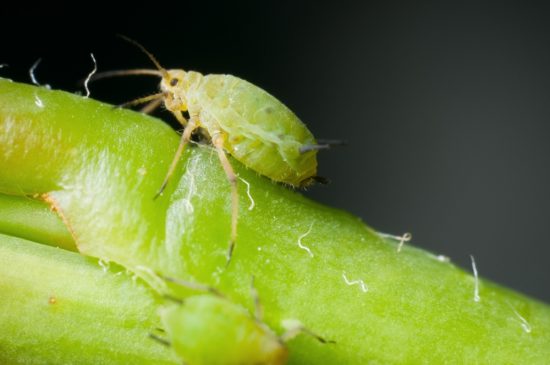

Light green aphids are more common on lemon.
Spider mite
This pest is microscopic in size (0.2-0.6 mm), and it is not easy to see it with the naked eye. Therefore, it is usually possible to detect its presence on lemon only after some part of the leaves is damaged. Settling on the underside of the leaf, these arachnid arthropods pierce the leaf plate and feed on sap. On the front side of the leaf, yellow spots are formed around the punctures, which determine the presence of a tick. In the future, the leaves curl into irregular lumps, which the tick entangles with cobwebs, thus equipping the nest.
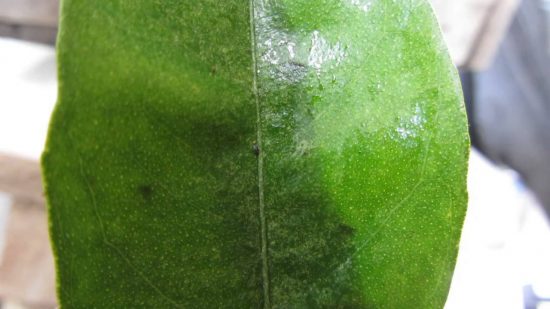

Very small yellowish dots on the leaves indicate damage from a spider mite
Insecticides are powerless against ticks. They are fought with acaricides (these are special anti-mite drugs) and universal insectoacaricides, for example, the above-mentioned Fitoverm and Aktellik. Under indoor conditions, Demitan is used, which successfully copes with the parasite, but it is dangerous for fish, so you should protect the aquariums in the house from getting into them.
Mealybug (white aphid, hairy lice)
It has a small size (from 3 to 6 mm) and an oblong body, covered with a powdery cotton-like white bloom. Like the previous considered pests, it sucks and feeds on sap from all parts of the plant. The citrus mealybug variety can also infect lemon roots. It is very easy to get rid of it. Since the worm is afraid of moisture, when it is found, it is enough to simply bathe the lemon in warm soapy water, thoroughly washing off the insects. Then you should treat the crown with a strong-smelling infusion, for example, tobacco or garlic, to scare off new pests.
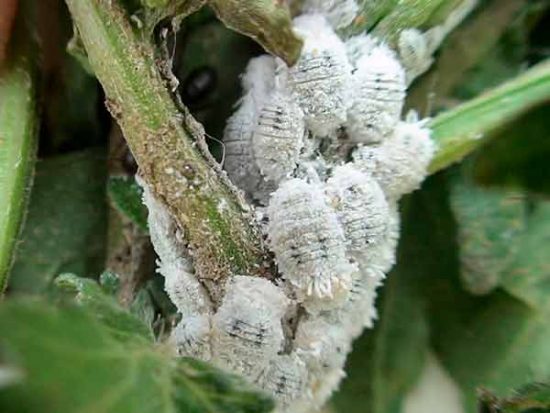

The mealybug has an oblong body, covered with a mealy, cotton-like white bloom
Video: treatment with Aktara from pests
Some Frequently Asked Questions About Lemon
It is not always possible to determine the cause of the deviations in the development of the lemon. We will answer a few frequently asked questions about diagnosing problems.
Lemon has brown spots
This indicates infection with fungal diseases - anthracnose or phyllostictosis. At worst, it could be citrus cancer.
Why does lemon drop flowers and what to do
The reasons for this phenomenon can be various violations of lemon farming techniques:
- Drafts and sudden temperature changes during flowering.
- Moisture deficiency or excess.
- Malnutrition, potassium and phosphorus deficiency.
- Too abundant flowering, while the plant sheds excess flowers.
- Moving the flowering lemon to other rooms, turning it 90-180 °.
- Damage by pests.
To eliminate the problem, it is necessary to normalize the conditions of detention, normalize by removing excess flowers (leave one of the largest buds for 10-15 leaves), get rid of pests.
How can a lemon be processed when curling leaves
To answer this question, you need to know the causes of the phenomenon. They can be like this:
- Leaves can curl from lack of water. You should follow the rules of maintaining the optimum moisture for the lemon.
- With a lack of fresh air, the leaves can also curl up.Therefore, with the onset of warm days, indoor plants should be transferred to verandas or under awnings and similar places, protected from drafts and direct sunlight.
- If, after watering, the leaves do not straighten and the situation remains unchanged, this means that the plant is deficient in boron. In this case, it is necessary to compensate for the deficit by introducing a 0.2% solution of boric acid (2 g per liter of water).
- If the leaves are not twisted into a tube, but simply bent, then this indicates a copper deficiency. With such symptoms, you need to spray the lemon with a 0.5% solution of copper sulfate.
- And the leaves can also curl as a result of damage by aphids or scale insects.
Why does lemon have sticky leaves?
The most common cause is the sweetish discharge of aphids or scale insects. And also, possibly, with excessive watering, the plant itself releases a sugary liquid.
Calamondin
Another name for this tree is citrofortunella. It was obtained by crossing a mandarin and a kumquat.
Calamondin is a small tree that looks like a tangerine. Its dimensions are quite small, so it can be easily placed on the windowsill. It has a beautiful neat dark green crown with lots of small bright orange fruits. Calamondin needs all the same conditions for normal growth as other citrus fruits.
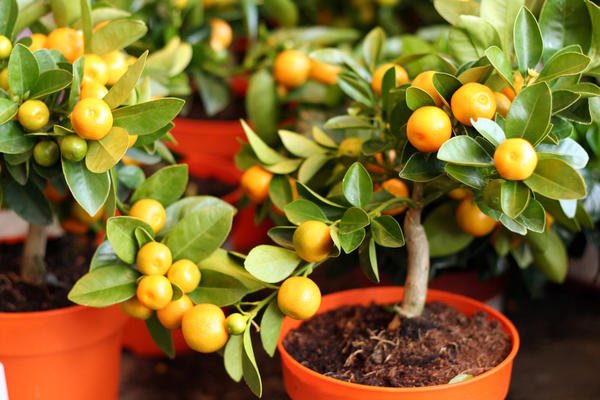

How to help lemon recover from illness
When it was possible to cure a lemon from any disease, then it will need to restore strength and immunity. To do this, you should provide him with enhanced nutrition with complex fertilizers (but do not overdo it), as well as process / feed with growth stimulants. The most famous among them:
If the lemon bloomed in the first year after a serious illness, then it is better to remove the flowers in order to preserve its strength for recovery.
Growing lemon in an apartment is available only to a purposeful and attentive amateur. Only by scrupulously following the rules of agricultural cultivation can we expect a positive result.
The pests of lemons are the same as on other indoor plants: aphids, thrips, scale insects, whiteflies, worms and nematodes are harmful. The article will help to identify the pest that destroys the lemon tree, to neutralize it and to prevent the appearance of insects.
Lemon pests appear on plants, regardless of how carefully they are taken care of. The wisdom of the gardener is to identify pests early in the colonization of plants, before they have multiplied to epidemic proportions. A careful, daily, inspection of lemon trees is half the success in resisting harmful insects and diseases.
Knowing the pests of lemons, their "appetite" and the peculiarities of their reproduction helps to take them by surprise and drive them out before they unpack their suitcases. For example, spider mites live on the inside of leaves and are big fans of high temperature and dryness, and the whitefly loves juicy, young leaves and settles on the tops of branches.
Having identified the type of pest, it is necessary to isolate the lemon in a separate room, but not on the balcony or loggia, as many do. It is recommended to move the quarantine lemon trees to the bathroom to rinse the leaves, trunk and branches with plenty of water. It is necessary to wash thoroughly, not missing a single sheet.
Having provided "lemon first aid", you can start treatment with folk remedies or chemicals that are sold in shops for gardeners.
Aphids on lemon
Aphids - small, sedentary, sucking pests of lemons, the size of Aphids can have different colors - from yellow to black, but most often aphids are green.
Aphids suck sap from plants, preferring young leaves, flowers and buds. Aphids stick around the leaves in whole colonies, feed and multiply quickly. Aphids are often raised and milked by ants - if you notice aphids, pay attention to the presence of ants.
Aphids are a nasty pest that weakens plants and transfers viral diseases from one plant to another.For example, aphids often enter your home with a bouquet of store-bought roses or chrysanthemums, which means they can transfer greenhouse viruses to your plants. Therefore, as a preventive measure, it is not recommended to put vases with purchased flowers in rooms where lemons grow.
Aphids graze on the underside of leaves, gathering in colonies. Lemons leaves curl or bend, discolor and become thin. When eating, the aphid secretes a sweet liquid - "honeydew" - so the leaves become sticky and sticky. By the way, the ants collect this liquid and carry it to the anthill. Aphid-infested lemons stun and look bad.
How to deal with aphids on lemon. Having identified aphids, thoroughly wash the leaves, branches and the stem of the lemon with soapy water, dissolving 30 grams of laundry soap in 1 liter of water.
It is necessary to wash the leaves on both sides. It is advisable to cover the soil with a film, and tie the trunk with a bandage so that the soapy liquid does not get inside the pot.
After washing the plant with soap, proceed with the treatment with chemicals or folk remedies to combat aphids, for example:
- Infusion of tobacco. Pour tobacco or makhorka (50 grams) with 1 liter. water and leave for one day, and then boil the infusion for 2 hours. Dilute the resulting tobacco infusion with one liter of water. The infusion is applied to the leaves and stems of the plant, evenly wetting the surface.
- Infusion of onion peels. Pour onion husks (30 grams) with 1 liter of water, leave for 5 days, and then strain. Apply the onion infusion, evenly watering the leaves and stems.
- Infusion of garlic peels. Pour the garlic husk (40 grams) with 3 liters of water and let it brew for a day, and then process the leaves and stems of the lemon.
- Mustard infusion. Pour dry mustard powder (70 grams) with 1 liter of boiling water and stir thoroughly to break up the lumps. Insist the resulting gruel for 3 days, tightly closing the lid. Before spraying lemon, dilute the suspension in water, in a 1: 3 ratio (one part mustard infusion, three parts water).
- Dandelion infusion. Pour the roots (30 grams) or leaves (50 grams) of dandelion with 1 liter of warm water (+50 ° C) and leave for 4 hours, then strain and thoroughly spray the lemon tree.
- Infusion of potato tops. Pour green or dried tops (150 grams and 75 grams, respectively) of potatoes with 1 liter of hot water and let it brew for 3 hours and strain. The infusion of potato tops is not stored, but used on the day of preparation.
- Infusion of tomato tops. Pour a pound of green tomato tops with one liter of water and boil for 30 minutes over low heat, strain and dilute with water in a 1: 3 ratio. Sprinkle the lemons thoroughly.
Attention: Infusions of onion and garlic peels, mustard and dandelion can be used when lemons are infested with spider mites.
Folk recipes
Folk recipes from the scale insect
The lemon scabbard remedy can be prepared in a few minutes, armed with the minimum amount of ingredients. Initially, all plants should be checked for the presence of insects, the infected ones should be isolated.
- Laundry soap is dissolved in warm water, each lemon leaf is treated with a brush, brush, washcloth. Or sprayed from a spray bottle.
- Mix red, black pepper, cinnamon, mustard, add soap. Process the lemon in any convenient way.
- Wood ash is diluted in water, laundry soap is added. Spray, water the soil.
- Pour boiled water over the tobacco, leave for 24 hours, throw in the soap, stir. Strain, sprinkle with lemon.
- Moisten a cotton swab with alcohol, wipe the leaves in places of accumulation of scale insects.
- Dilute olive oil with water. Leaves are treated with a brush, cotton swab, washcloth.
- Garlic is chopped, poured with cold water, insisted for 24 hours. A soap base is added before use.
- Add onion peel decoction to the green soap, spray the plant with the solution.
It is necessary to process lemon from scale insects with any folk remedy within 2 weeks with a break of 3 days. Monitor the condition of the plant daily. It is recommended to return the lemon to its permanent place in a month.
Whitefly and its larvae
Whiteflies are similar to white moths - insects that live on the underside of lemon leaves. Two pairs of whitefly wings are covered with white powdery pollen.
Non-flying insects, larvae hatching from many eggs laid by the female, are harmful. During the year, up to three generations of larvae appear, which intensely harm the plant, sucking the juices from the leaves.
Whitefly larvae are particularly damaging to flowering lemons, causing the plant to become emaciated and shedding ovaries. The larvae, feeding on lemon juices, secrete sweet secretions, in which a sooty fungus begins to develop, covering the entire surface of the leaf. The sooty fungus spoils the appearance of the fruit and interferes with photosynthesis in lemon foliage.
Whitefly larvae are greenish, looking like grains on the underside of leaves. The lemon tree quickly becomes covered with white, small, spots, and the most affected leaves turn yellow and fall off.
How to get rid of a whitefly. Whitefly is considered a serious pest that is difficult to get rid of. Flying insects are mobile and fertile - females lay up to 200 eggs at a time. Fortunately, they stick well to regular fly sticks, and eggs and larvae can be easily washed off with running water.
For the prevention and control of whitefly, it is recommended to use the preparations "Tanrek", "Inta-Vir" or "Alatar", or other insecticides based on cypermethrin. Or folk remedies for pest control:
- Shag infusion. Pour a makhorka (40 grams) with 1 liter of hot water, leave for days, strain and add a piece of laundry soap to the infusion. Treat indoor lemons with infusion, abundantly wetting all parts of the plant, and after 8 hours rinse the shoots with clean running water.
- Ash, alkaline solution. Pour wood ash (20 grams) and laundry soap (50 grams) with 10 liters of hot water, mix well, wait for the soap to dissolve and process the plants, thoroughly wetting the leaves.
By the way, shag infusion is effective against aphids and spider mites.
Thrips - malicious pests of lemons
Thrips are small but very harmful insects that cause serious damage to indoor lemons. Larvae and adult insects are harmful, sucking juices from lemon leaves.
Thrips are easily identified by silvery streaks that remain when insects move from leaf to leaf. Light dots appear on the leaves, the leaves become discolored and fall off, and the flowers are deformed and stained. The growth of the lemon tree is slowing down.
What to do? If thrips attack the lemon, fight them in the same way as against aphids, spider mites and scabbards.
Description
The scale insect is an insect that often settles on citrus trees, in particular on lemon.
The scale insect is a small insect. While the pests are at an immature age, they creep along the stem of the plant, stick to it and freeze, after which they are covered with a wax shield. Such a wax film serves as a reliable protection against most drugs.
The insect reproduces very actively, it can also infect other nearby flowers. The scale insects absorb the sap from the plant, secrete a sticky liquid that covers the leaves with a dense layer. As a result, the plant stops "breathing", photosynthesis becomes difficult.
Sticky discharge is a favorable environment for the appearance of fungal infections.
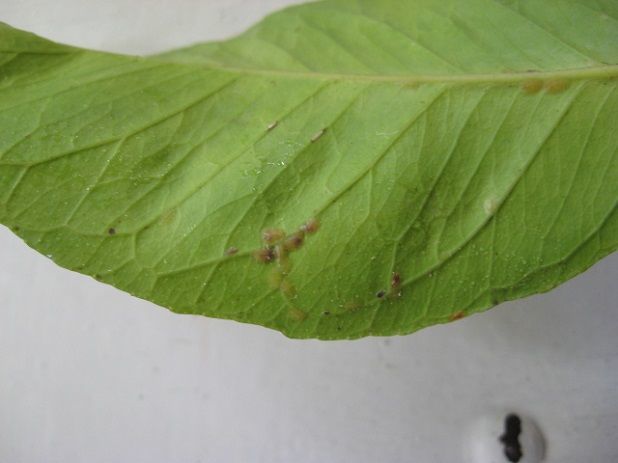

Spider mites
A separate article on our website is devoted to spider mites. In general, spider mites grow and reproduce on almost all houseplants, and lemons are no exception.
Spider mites love dry air and high temperatures, settle on the back of the leaf and multiply rapidly, increasing their population every week. If wet and damp, spider mite females hibernate, burrowing in the soil or hiding in cracks and cracks in window frames, under fallen leaves and other secluded places, waiting for warmth and dryness.
Mites cause serious damage to plants. White dots, holes appear on the lemon leaves, which are left by an insect sucking the cell juice of the lemon. The surface of the leaves is covered with small yellow spots that turn brown over time. Young leaves, entangled in cobwebs, curl. The lemon tree weakens, the branches become bare, and fruiting worsens.
At a later stage, when the number of spider mites has reached its maximum value, a cobweb forms between the leaves and stems of the lemon, covering the lower surface of the leaves, covering the pests when spraying with chemicals.
How to deal with spider mites? Mites love dry air and warmth, so by spraying lemons and humidifying the air around you, you will provide good spider mite prevention and reduce the population of existing lemon pests.
To remove spider mites from leaves, wash them with warm, running water and soap. Regular airing of the premises also prevents the mite population from roaming around.
Irradiation of indoor lemons with an ultraviolet lamp 2 minutes once a week greatly reduces the number of spider mites on plants and increases immunity.
When fighting ticks, the rule applies: if there are few ticks and they did not have time to capture the plants, then folk remedies are used, otherwise only chemical preparations.
Folk remedies for combating spider mites:
- Infusion of yarrow. 10 tbsp. l. Pour yarrow herbs with 1 liter of boiling water, leave for 24 hours and strain. Spray the plants while moisturizing the leaves, stems, and stem.
- Infusion of garlic. Crush one hundred grams of garlic into gruel using a garlic press or grate, pour 1 liter of water and leave for 5 days. For spraying, dilute the infusion, at the rate of 50 grams per 1 liter of water. Spray the plants and rinse with clean water after 2 hours. Repeat spraying with garlic infusion every 5 days.
- Water-oil emulsion. Dissolve one teaspoon of machine oil or vegetable oil and an incomplete tablespoon of washing oil in 1 liter of warm water. Stir the mixture, shake well and sprinkle over the lemons. After a minute, rinse the lemon leaves and stems with clean water.
- Alkaline tobacco mixture. Pour 1 tbsp. l. tobacco dust with a glass of boiling water and leave for 6 days. Before use, add 10 grams of shaved soap to the mixture. The alkaline tobacco mixture is effective when sprinkling lemons 3 times at weekly intervals.
- Sulfur-lime broth. Dissolve lime (20 grams) and ground sulfur (40 grams) in 300 ml of water and boil the solution for an hour over low heat. The broth must be diluted with water just before spraying.
- Infusions of onion peel, dandelion, potato and tomato tops, described in the "Aphid" section.
Various drugs
There are general rules for all drugs:
- It is advisable to carry out the treatment in the fresh air, if this is not possible, in a very well-ventilated area.
- Use gloves. If necessary, use a mask. The recommendation on personal protective equipment is on the packaging of all preparations, but not all growers follow them.
- After processing, clothes should be washed, surfaces, on which the agent could have gotten, should be thoroughly washed.
- Dispose of in no case in the apartment.
- Most of the products are contact, that is, pests die when they come into contact with the drug. Conclusion: you need to carefully treat the surfaces.
About the funds themselves:
- Actellic is a very powerful "killer" agent that reliably relieves the tick on the lemon.Acts on arachnids. Recommended if the plants are heavily and massively affected by the mite. The drug is extremely toxic, with a pungent odor.
- Neoron is a versatile substance that can kill both adults and eggs. One procedure, of course, will not be enough, but two, as a rule, are enough to completely get rid of pests.
- Fitoverm is a fairly well-known drug because it is less toxic than others. It is perfectly acceptable (although undesirable) to spray plants with it in the bathroom. Affected lemons are treated with Fitoverm 3-4 times, at intervals of a week.
- Sunmight is similar in action to Neoron. A Japanese preparation in the form of a powder, it is very effective against ticks at any stage of development, however, it is used on one plant no more than once a year, otherwise the ticks get used to it. The disadvantage is that it is rarely found on sale.
- Aktofit - used mainly by greenhouse farms for the treatment of plants in open ground, but can also be used for indoor plants. From the tick, 1-2 treatments will be required, at the rate of 4 ml of the drug per 1 liter of liquid.
- Aktara - the drug is not declared to act against spider mites, it is an insecticide, it works against insects. However, in practice, many note that Aktara is really effective: after spilling a coma of earth with an affected tree, ticks disappear.
- Nissoran is a preparation in powder form. Acts at any stage of ticks, except for adults. That is, it will get rid of eggs, larvae, nymphs of the spider mite. Differs in long-term action (up to 1.5 months), is not phytotoxic. It is effective to use until there are too many adults. The result will be noticeable in 10 days (it is at this time that adult pests die by natural death).
- Akarin is a drug in ampoules, characterized by a high speed of exposure, affects ticks after 8-16 hours (on gnawing pests - after 4 hours).
- Apolo is a liquid preparation rarely found on the market. However, it is popular among advanced florists in the fight against ticks, because it is designed to protect the plant from them and is able to act on eggs and larvae. The drug does not touch adults, however, depriving them of the opportunity to reproduce (recall that the lifespan of a spider mite is from 30 hours to 8 days), quickly leads to the complete death of parasites. The drug does not act once, but is prolonged, as a rule, 1-2 treatments are enough.
- Vermitic - dissolve 2.5-3 ml in 10 liters of water. The plant is sprayed, then wrapped in polyethylene, removed in a day. The drug penetrates into the tissue of the flower, thereby ensuring activity after treatment.
- Agravertine is used against spider mites and many pests of open ground, for example, the Colorado potato beetle. Unlike most of these drugs, acting on the digestion of pests, attacks their nervous system, causing paralysis. The parasites cease to move 6 hours after treatment and die within 2-3 days. For the treatment of indoor lemons, dilute 5 ml per 1 liter of water.
Shield and false shield
Scabbards are small sucking pests of lemons, resembling small turtles, up to 5 mm in size. Larvae and adult insects are harmful. Scale larvae are mobile, they can migrate from plant to plant, even along the windowsill.
Having reached the plant, the scale insect larvae attach to it, and begin to grow, secreting liquid from the glands, which forms a shield on the insect body, which protects the scale insects from chemicals. Adult scale insects are immobile, with difficulty they are separated from the plant. Females give generations of larvae during the year.
Scabbards settle on the leaves of lemons, along the veins above and below the leaf, and on fruits. The leaves become sticky, turn yellow and wither.
In the initial stage, scabies are almost transparent, whitish in color, barely noticeable. Adult insects are noticeable after the growth of the scutellum: light gray round - scutes and brown oval - false scutes.Plants are weakened, yields are reduced.
How to deal with scale insects? It is easiest to get rid of scale insects at the initial stage of plant settlement - they are inactive and do not bite. Collect a small amount of scale insects by hand, and then wipe the leaves and branches with a cotton swab or a toothbrush dipped in a solution of laundry soap or alcohol.
Folk remedies for scale insects:
- Water-oil emulsion. This is a more concentrated version of a similar emulsion for combating spider mites. 1 teaspoon of machine oil, 2 tablespoons of washing powder and 40 g of laundry soap are thoroughly mixed in a glass of warm water. The prepared emulsion is applied to all leaves and branches of the plant with a cotton swab. It is necessary to ensure that the emulsion does not get into the soil, to avoid this, cover it before starting the treatment with plastic wrap. After 3.5-4 hours, the plants are thoroughly washed with clean water. Processing is repeated at least 3 times, a break between treatments
- Garlic "gruel". Dilute the grated garlic and laundry soap with water in a 1: 1: 3 ratio. With a toothbrush, the resulting gruel is applied to all parts of the plant (leaves, branches, trunk). After about an hour, the gruel from the plant is washed off with water.
- Broth of bitter capsicum. Chopped pepper pods (100 g fresh or 10 g dry) pour 1 liter of water, boil for 30 minutes and leave for 2 days. Before use, 1 tablespoon of the concentrate is diluted with 1 liter of water by adding 1 tablespoon of grated laundry soap to the solution. After 2 hours, the plant is washed with water. Spraying is carried out every 2 weeks until the pests disappear.
Attention: A decoction of hot pepper can be used against aphids and spider mites.
Control methods
How to deal with a scabbard? Methods of dealing with the scale insect on lemon can be divided into mechanical, chemical and folk. Of course, chemical ones are the most effective. However, if you are not afraid of harming the lemon or the chemicals around you, there are alternative methods you can use.


Mechanical
Perhaps the most time consuming method. To do this, you will need alcohol and a cotton swab. You can also use a toothbrush. You need to moisten a cotton swab with alcohol and try to remove any insects that have stuck to your lemons. They can be difficult to remove, so use a toothbrush to make it easier for yourself.
The complexity of the method lies in the fact that there are quite a lot of insects, moreover, they can be found in hard-to-reach places.
They can be found not only on the stem or leaves, but also in the ovaries. If, during the operation, the thought "I am struggling, but it is useless" comes to you, drive it away. After all, the bug's shell reliably protects it from chemicals, so getting rid of adults is possible only manually.
Scorms
Worms are prolific pests of lemons, similar to large aphids. Like aphids, the worms multiply rapidly and take over the whole lemon, feeding on cell sap and watering the leaves with sweet secretions.
Mealybugs (felt) bother citrus growers more often than others, therefore a separate article is devoted to mealybugs: a description of pests, the fight against them and the prevention of plant infection.
Noticing a loose, white, bloom on the leaves of indoor lemon, you should take all measures to destroy pests.
Nematodes
All the lemon pests described above damage the aerial part of indoor lemons - they can be seen with the naked eye and are easy to diagnose. It is more difficult with pests that live in the soil, in a pot, at the roots of plants. Among the "hidden" pests of lemons and citrus fruits in general are nematodes, microscopic worms.
Nematodes feed on juice from lemon roots. Over time, the root system dies off - it dies from necrosis, which also affects the aerial part: the leaves wither, curl, stop in growth and development.With a strong infection, indoor lemon dies.
Nematodes are quarantine pests, where there are nematodes, total disinfection is carried out. As a preventive measure against nematode infestation, it is recommended to disinfect soil pots by keeping them in a bucket of boiling water for an hour.
Signs of defeat
Various pests can become the cause of plant disease, in order to determine their type, it is necessary to examine the leaves and trunk of the lemon. At the initial stage of damage, a small insect manages to hide well from human eyes. Small larvae are difficult to discern, but adults are clearly visible. They are brown or brown tubercles along the veins of the leaves, on the trunks. These clusters look like a brown waxy coating. Also noticeable is the sticky secret that the shield aphid leaves on the leaves.


Shield aphid on lemon
Information. Infection of indoor lemon with a scabbard occurs through the soil with larvae, it is possible to buy a sick tree. The source of the appearance of the pest can be purchased bouquets, fruits, and other indoor flowers.
Lemon pests: prevention
At home, it is difficult to deal with pests, it is easier to prevent pests from reaching indoor plants than to fight them for weeks later. By observing simple rules for preventing the appearance of pests, you can significantly reduce the likelihood of the appearance of insects that feed on your lemons:
- Thorough inspection of the "new" plants. Store-bought plants should be quarantined for weeks and examined regularly for lemons pest infestation. It is best, without waiting for trouble, to wash the leaves of purchased plants with running water and soap.
- Keep bouquets away from houseplants. Pests often enter the house with purchased bouquets or with bouquets of flowers cut in the country or garden. Remember that most lemon pests reproduce very quickly, so even a few insects pose a real threat to houseplants.
- Preventive flushing. Rinse the leaves and branches of the lemons with running water once a month, covering the soil with a film. The shower makes plants more resistant to emerging pests. It is also recommended to observe the regimes of watering, lighting and plant nutrition.
Reasons for the appearance
A scale insect can get on a lemon from other indoor plants or be brought into a room with a bouquet of flowers, on fruits. In the upper layer of the soil of the purchased lemon, there may be insect larvae. Scale larvae up to the adult phase are up to 1 mm in size, which complicates their detection. It is possible to introduce a pest from a greenhouse where citrus fruits are bred.
Scabbards appear if the tree is weakened due to non-compliance with the growing conditions:
- too dry air;
- dustiness;
- proximity of other colors.
In the presence of such factors, the likelihood of infection of a lemon tree not only with a scabbard, but also with other pests (aphids, bugs, ticks) and pathogens is high.

